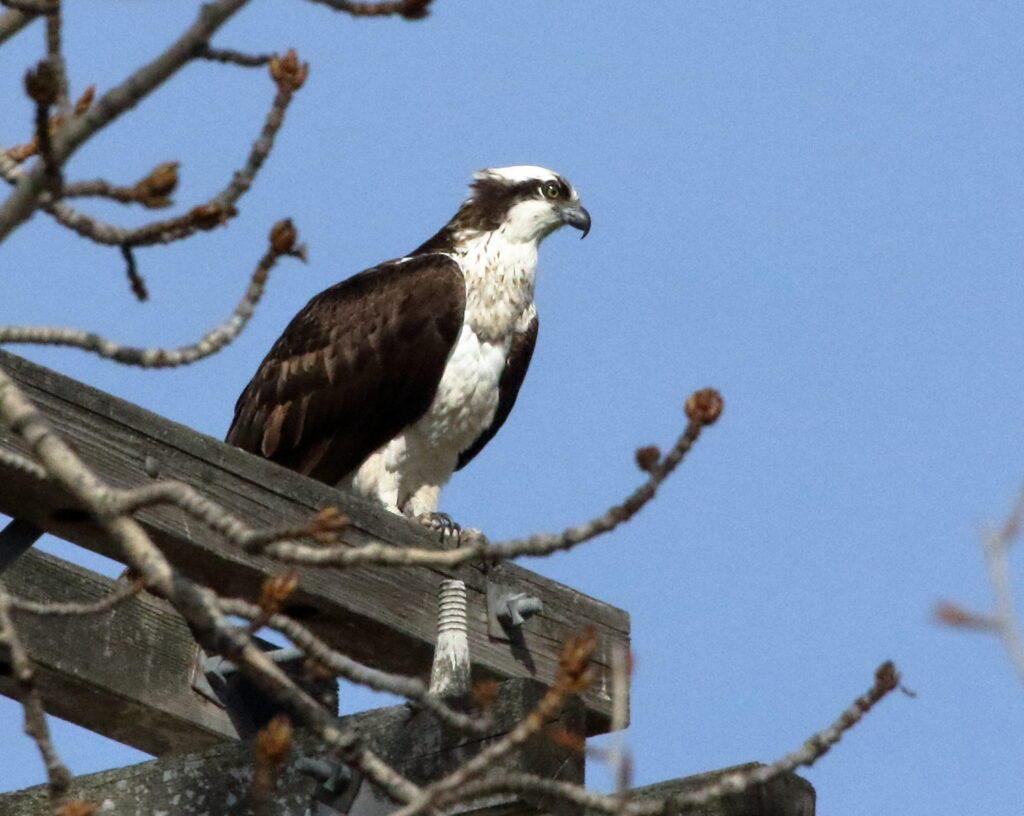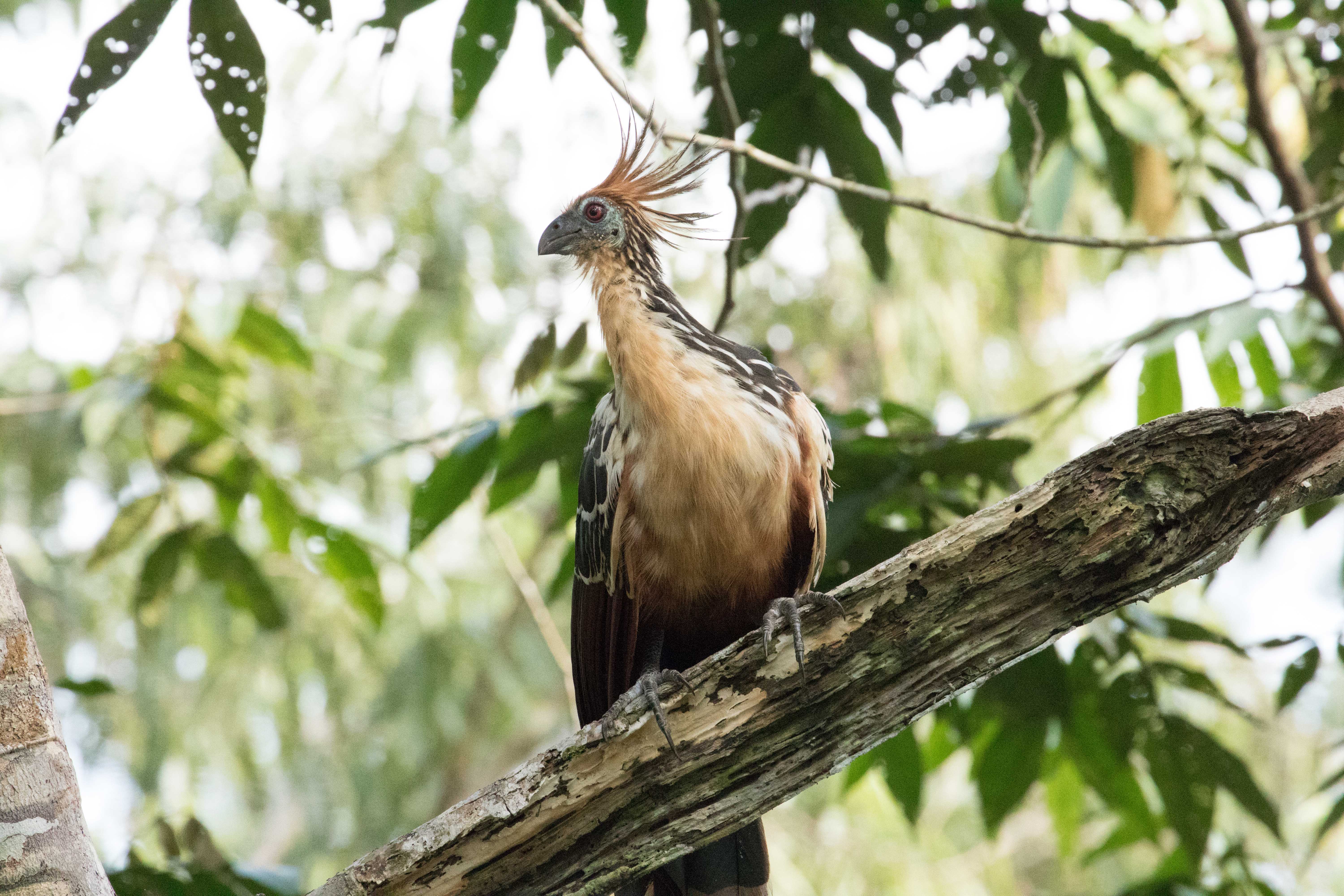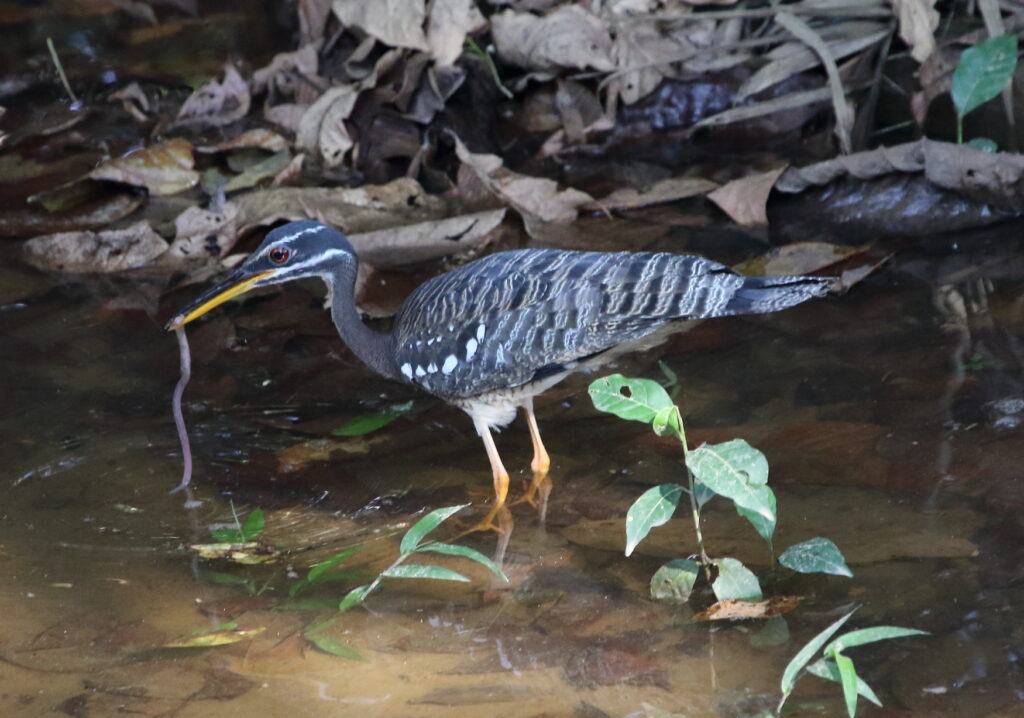Have you subscribed to FatherSonBirding yet? We won’t share your information with anyone—but don’t want you to miss out on a single birding adventure! Just fill out the box down and to the right!
Since Braden returned to college, I haven’t been birding a whole lot. Instead, I’ve been working on a new children’s picture book about monotypic animals—animals without any close relatives. The book won’t be out for a couple of years, but I can’t wait that long to share some discoveries. But first, an explanation of monotypic: in a scientific sense (and what other sense could there be with such a word?), monotypic refers to an animal with no other members in its genus. According to Birds of the World, for example, the genus Turdus contains 83 different species—including the American Robin—but a monotypic species would have no other ‘roommates’ in its genus.

For my book, though, I have been investigating animals that are monotypic not just to genus, but at least to their scientific family or order. In other words, these species are truly apart, without any even vaguely close relatives. I didn’t know how many of these loners I might find, but guess what? There are a lot more than I expected—including birds! You probably have heard of some of them including the Hammerkop, Shoebill, Egyptian Plover, Rail-babbler, and my favorite, the Secretarybird! All of these are only distantly related to any other kind of bird.
Not that they’ve never had relatives. I suspect most of them have. What happened to their close cousins? We will never know, but they undoubtedly succumbed to a panoply of climatic, geological, and biological catastrophes. Which makes these monotypic survivors all the more impressive, in that they somehow navigated the endless avalanche of disasters that have befallen the world! Learning about these animals, however, also made me ask myself, “In my own relatively brief birding career have I myself actually seen any monotypic-to-family birds?” Astonishingly, the answer is yes—and if you’re reading this, you probably have, too!
Number 1 on most of our lists has to be the Osprey. If you think about it, that makes sense. I mean, the Osprey is just one weird-looking bird of prey, but even more interesting, it split off from all other raptors very early on in raptor evolution. Can you guess its closest living relative? Yep. Africa’s Secretarybird—another very bizarre bird of prey!

Many of you also may have seen the Limpkin—the sole species in the bird family Aramidae. Long before I ever became a birder, I enjoyed these gastropod- and bivalve-eaters while visiting Florida’s Wakulla Springs south of Tallahassee. More recently, I heard—but didn’t see—one down in Houston while working on My Accidental Big Year. If you are birding Arizona and New Mexico, you can nab yet another monotypic-to-family bird, the Olive Warbler, of the family Peucedramidae. For other birds that are monotypic to family, however, we must venture outside of U.S. borders—something Braden and I have been fortunate to do.
During our visit to the Sani Lodge in the Amazon in 2017, we picked up two monotypic species—in the same location! One was the iconic Hoatzin, a large turkey-like bird that is the sole resident of the family Opisthocomidae. Hoatzins like to show off, and if you watch almost any film or read any book about the Amazon you will undoubtedly see this bird since it often gathers near humans in large numbers. During our stay at Sani, I woke up to dogs barking one night and asked our hosts about it. They looked at me strangely. “We don’t have any dogs here.” We finally figured out that I’d been hearing Hoatzins!

In between outings at Sani, Braden and I were also lucky enough to see a handsome bird silently stalking worms, crayfish, and frogs in shallow waters. What was it? A shy Sunbittern, sole species in the bird family Eurypygidae. These birds are quite cryptic (camouflaged), but apparently when they spread their wings they unleash a burst of spectacular color—something Braden and I unfortunately failed to witness. Still, we didn’t even know Sunbitterns existed before the trip and are happy to now have them firmly dwelling in our brain banks.

If you want to learn even more about monotypic-to-family birds, click here for a fun website. Some of the taxonomies have changed, but most are still accurate, and you’re sure to notice some surprises. Meanwhile, I am contemplating a quest to see every monotypic bird family on earth. If you would like to help me and Braden do this please send a nonrefundable check for, say, fifty thousand dollars, and we will begin post-haste! As always, thanks for reading and be sure to share this post with your birding buddies!

Great post! I have often thought about how unusual the Secretary bird and especially the Hoatzin appear. Having just been to Texas made me wonder about Caracaras. They aren’t monotypical, except for maybe the Black Caracara. I eagerly await your publication.
Thanks so much, George! Yeah, caracaras definitely took a turn off “the skies less taken”. It’s hard to tell just by looking at species, though. So amazing they can do all of this genetic testing now!
This is great! Awesome book idea. Regarding birds, it brings to mind the verdin which has an interesting phylogeny, and made me curious enough to look up about dippers (Cinclus) globally as well. Fascinating!
Well, you made ME look up Verdin, too. Penduline-tits, huh? Who would have guessed?
Glad you enjoyed the post 🙂
A very interesting post. I’m surprised that the Osprey is among this group. Great book idea. I’ll fund your Monotypic Quest – as soon as I win the lottery, lol..
Thanks, Rog! I hope you’re out buying lotto tickets as I write this!
There you go again, turning the world of birding on its, err, ear(-ed grebe). Next up: a monotypic checklist book?
You never know! Or maybe even a Monopoly checklist book!
As long as it’s not a monotonous checklist book. That would only add to the blahs.
Oh, we can do monotonous checklist books, too! Sign up today!
Just returned from Costa Rica and immediately thought of limpkin when I read the title and intro of the post. Guess I didn’t have to go quite so far to see one. But I did see a few other things so I’ll count the trip as worthwhile 😉
Went out with a guide one day and we were comparing our regions. He was a bit wistful about all the thrushes and warblers we share, but whose songs he never gets to hear since he gets them in the opposite season.
Costa Rica must have been terrific. I spent two months there–alas BEFORE I became a birder, which still ticks me off–ha! Interesting comment about your guide, too. I never really thought about that, but am speaking remotely to a school in Thailand this week and they are in the same boat, getting many of their birds in winter. Thanks for reading!